Dishguild
Concept Design | Product Design
Dishguild is a concept for a portable dishwasher for camping. Camping is an enjoyable experience, but doing the dishes isn't. With Dishguild, there's no more scrubbing and going back and forth from water faucet to campsite. Just fill with water, load your dishes, and pump the pedal - no electricity needed!

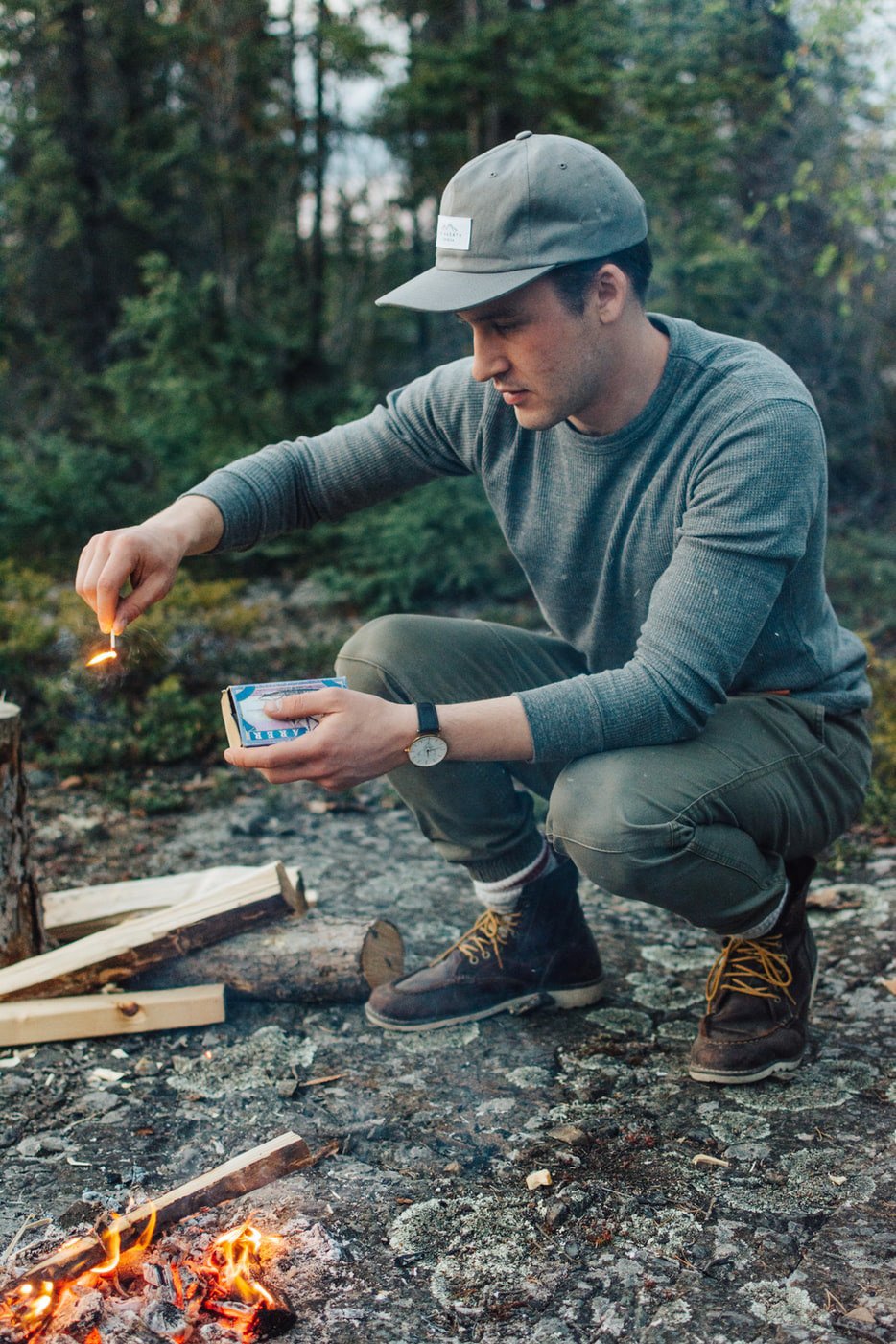
We all love camping. It's the great escape outdoors from home. However, you cannot hide from all the chores. As the world becomes increasingly environmentally conscious and we make a move to reduce waste, campers have switched from using disposable plates to reusable ones. However, this comes with the task we all dread - doing the dishes.
When researching the market, there are little to no options for camping dishwashers. The most you get when doing a google search are pictures of grey tubs that people fill with water and hand scrub. As an avid camper myself, I know that this process is absolutely no fun, and can take pretty long depending on how many dishes you have. Dishguild aims to solve this.
The Concept
Set-Up
Set up your dishwasher by taking out your collapsible top, and popping it up. Bring out the legs of the washer from where they’re tucked at the bottom. Take out the heater handle (the crank), and attach it to the side of the washer. It should easily slide in and make a clicking sound when it locks. Take out the pedal and plug its cord into its respected rectangular slot on the other side of the washer. Make sure the water release opening notch near the bottom is closed, and insert your dish rack by placing it into the notches on the sides. Load in your dishes, and you’re good to go!
Washing
All you have to do is pour in your water and a few squirts of dish soap (we recommend Dawn). Put the cover on the top - make sure it’s secure. To heat up the water, start cranking the heater handle at the side. After a minute, the water should be warm enough to start washing. Begin stepping on the pedal to pump the spinner inside the washer. It really depends on how dirty your dishes are, but a couple minutes of stepping should do the trick.
Rinsing
Once your dishes are thoroughly soaped and cleaned, you will need to rinse them. Simply do this by opening the notch at the bottom of the washer and letting the soapy water pour out. Then pour in more water, turn the crank, and pump the pedal.
Drying
After the rinse, you can open the notch at the bottom of the washer to drain and let your dishes dry. You can do this by popping the lid off the top and letting them air dry. Or you can keep them covered if you plan on staying the night, and just unload them in the morning for use!
After revisiting my concept and design, there were a few things that could be changed. First was the notion of water efficiency. Though this product was aimed to keep campers green, it unfortunately used a lot of water in its washing/rinsing process. This could be solved by studying the mechanics of real dishwashers, and how their spray arms worked. Second was the height - it was almost unnecessarily tall, and the rack had no support being so high up. Instead, it was suggested that the rack move down to the base, and that the height drop a couple inches. Third was the nonessential heat crank. As pointed out by my peers, campers could just pour in their own hot water from the kettle and mix it with regular faucet water.
The Design + Prototype
The final design got rid of the heat crank, reduced the height of the collapsable top, and contained a dishwasher arm to spray (rather than churn water).
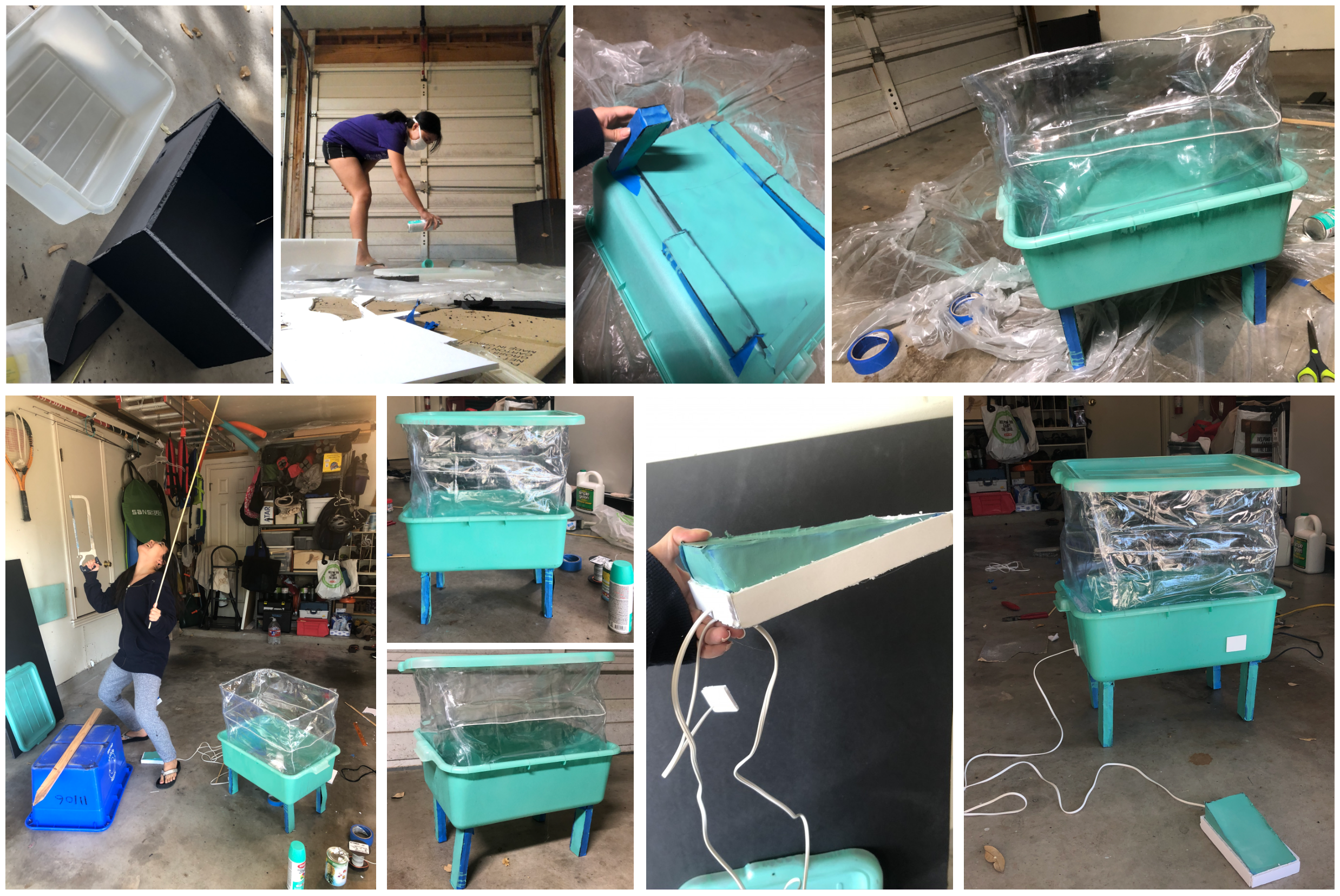

The final design got rid of the heat crank, reduced the height of the collapsable top, and contained a dishwasher arm to spray (rather than churn water).
In real life, Dishguild's base, legs, and top would be made out of high density polyethylene plastic, and its collapsable portion would be made from silicone gel.
Rebrand
The project took a turn when the professor declared that we would be re-designing our product with brands that he picked. This was to help us learn more design language and look better examine how branding and identity works within industrial design.
I was assigned Breville, a high-end kitchen appliance brand used in consumer homes and cafes.
I started by creating a Breville "mood board" with notes on the Breville design language and what the company stood for.
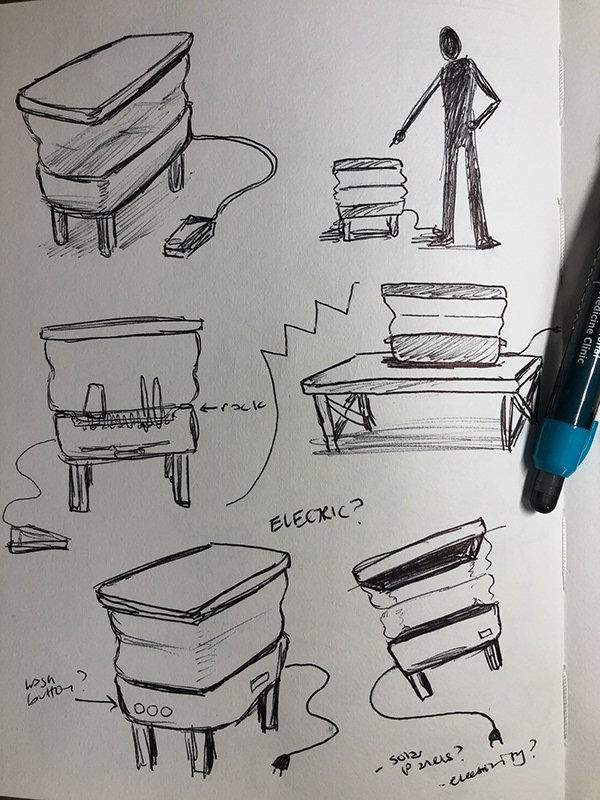
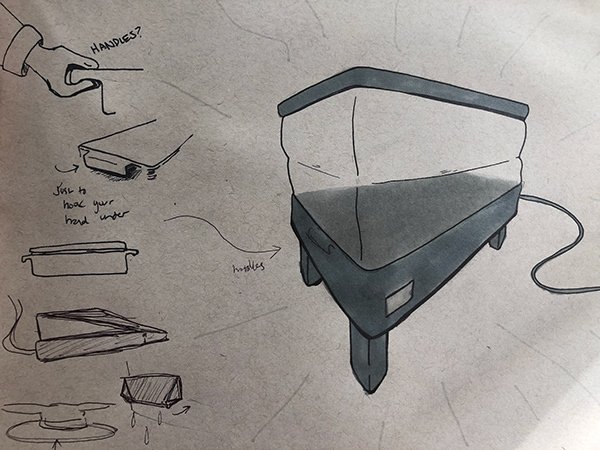
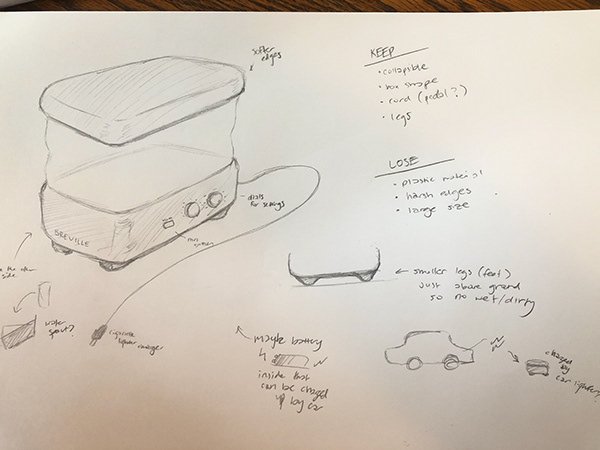

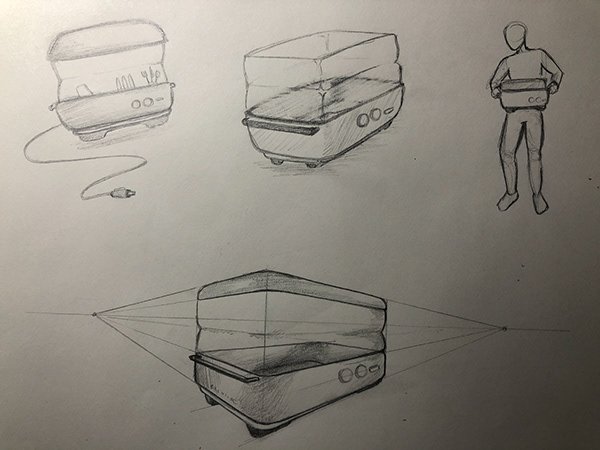
I then did some sketches. I looked at aspects of my design I was missing from my critique from the first "final" product, and aspects and details I would need to change/incorporate to make the product best represent "Breville".
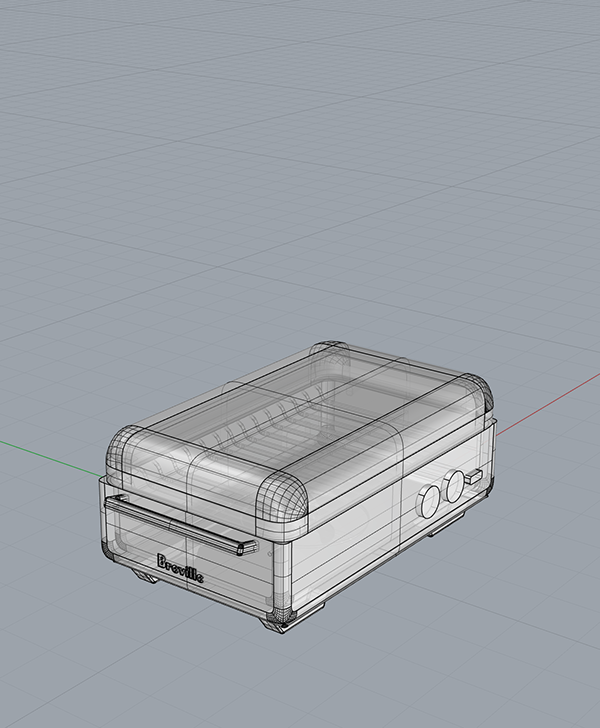
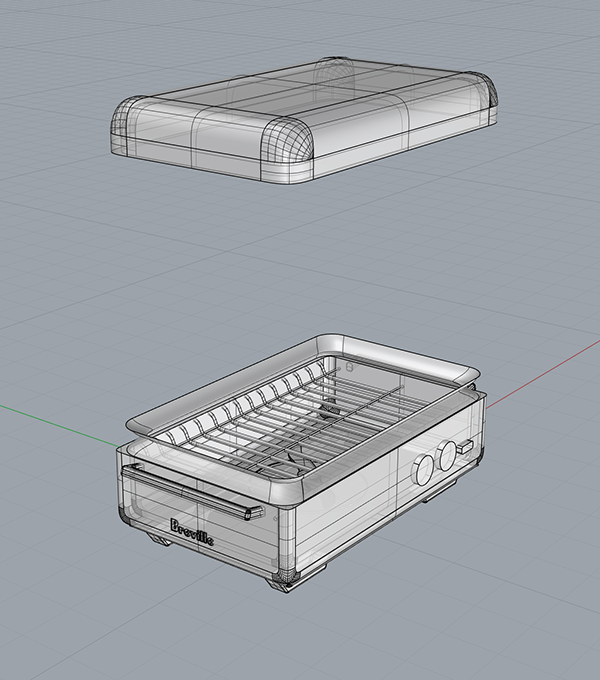
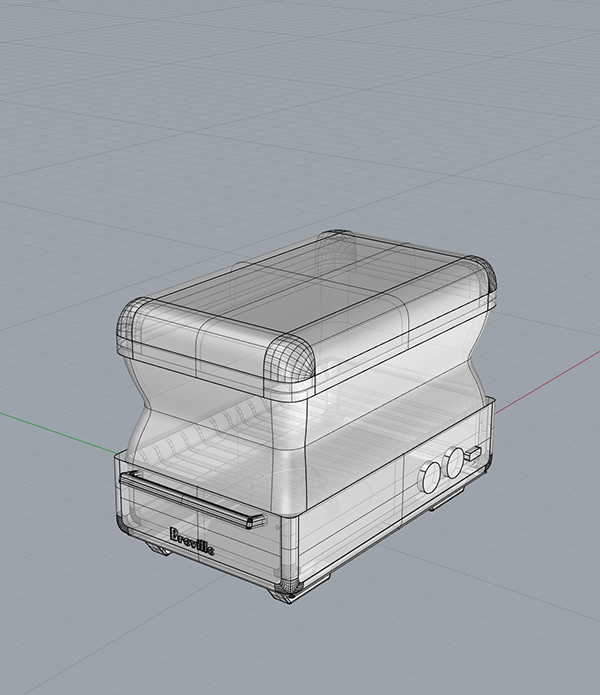
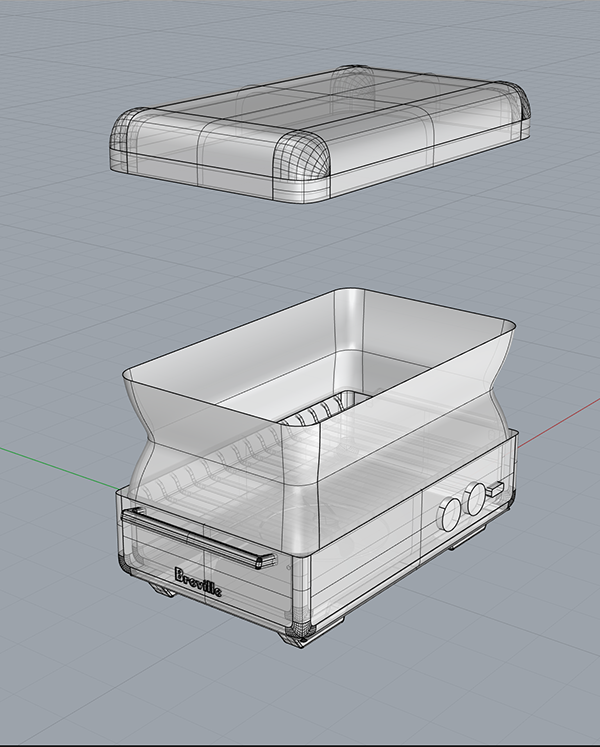
After sketching, I used Rhino 3D to model my final product. (With an actual dishrack this time.)
Final Poster
Our final deliverable was a project poster board, not only presenting our final, re-branded design, but also the process of how we got there.









